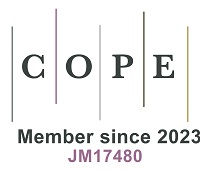REFERENCES
1. Scharlemann JP, Tanner EV, Hiederer R, Kapos V. Global soil carbon: understanding and managing the largest terrestrial carbon pool. Carbon Manag 2014;5:81-91.
2. Zou J, Yang Y, Shi S, et al. Farm-scale practical strategies to reduce carbon footprint and emergy while increasing economic benefits in crop production in the North China plain. J J Clean Prod 2022;359:131996.
3. 4 per 1000 research program, 2017. Available from: https://4p1000.org/?lang=en. [Last accessed on 25 Nov 2024]
5. Borrelli P, Robinson DA, Fleischer LR, et al. An assessment of the global impact of 21st century land use change on soil erosion. Nat Commun 2017;8:2013.
6. Zomer RJ, Bossio DA, Sommer R, Verchot LV. Global sequestration potential of increased organic carbon in cropland soils. Sci Rep 2017;7:15554.
7. Henry B, Dalal R, Harrison MT, Keating B. Creating frameworks to foster soil carbon sequestration. In: Rumpel C, editor. Understanding and fostering soil carbon sequestration. Burleigh Dodds Science Publishing Limited. 2023; pp.767-808. Available from: https://library.oapen.org/handle/20.500.12657/61538. [Last accessed on 22 Nov 2024].
8. Sándor R, Ehrhardt F, Grace P, et al. Ensemble modelling of carbon fluxes in grasslands and croplands. Field Crop Res 2020;252:107791.
9. Ren W, Banger K, Tao B, Yang J, Huang Y, Tian H. Global pattern and change of cropland soil organic carbon during 1901-2010: Roles of climate, atmospheric chemistry, land use and management. Geogr Sustain 2020;1:59-69.
10. Lal R. Soil carbon sequestration impacts on global climate change and food security. Science 2004;304:1623-7.
11. Muleke A, Harrison MT, Eisner R, et al. Clarifying confusions over carbon conclusions: antecedent soil carbon drives gains realised following intervention. Glob. Environ Change Adv 2023;1:100001.
12. Poeplau C, Don A. Carbon sequestration in agricultural soils via cultivation of cover crops - a meta-analysis. Agric Ecosyst Environ 2015;200:33-41.
13. Brewer KM, Gaudin AC. Potential of crop-livestock integration to enhance carbon sequestration and agroecosystem functioning in semi-arid croplands. Soil Biol Biochem 2020;149:107936.
14. Gaudaré U, Kuhnert M, Smith P, et al. Soil organic carbon stocks potentially at risk of decline with organic farming expansion. Nat Clim Change 2023;13:719-25.
15. Gregorich EG, Janzen H, Ellert BH, et al. Litter decay controlled by temperature, not soil properties, affecting future soil carbon. Glob Chang Biol 2017;23:1725-34.
16. Chenu C, Angers DA, Barré P, Derrien D, Arrouays D, Balesdent J. Increasing organic stocks in agricultural soils: knowledge gaps and potential innovations. Soil Till Res 2019;188:41-52.
17. Amelung W, Bossio D, de Vries W, et al. Towards a global-scale soil climate mitigation strategy. Nat Commun 2020;11:5427.
18. Kan ZR, Liu WX, Liu WS, et al. Mechanisms of soil organic carbon stability and its response to no-till: a global synthesis and perspective. Glob Chang Biol 2022;28:693-710.
19. Bilotto F, Harrison MT, Migliorati MA, et al. Can seasonal soil N mineralisation trends be leveraged to enhance pasture growth? Sci Total Environ 2021;772:145031.
20. Bilotto F, Vibart R, Mackay A, Costall D, Harrison MT. Towards an integrated phosphorus, carbon and nitrogen cycling model for topographically diverse grasslands. Nutr Cycl Agroecosyst 2022;124:153-72.
21. Yin X, Song Z, Shi S, et al. Developments and prospects of multiple cropping in China. Farm Syst 2024;2:100083.
22. Waha K, Dietrich JP, Portmann FT, et al. Multiple cropping systems of the world and the potential for increasing cropping intensity. Glob Environ Chang 2020;64:102131.
23. Zhao X, Wang Y, Cai S, et al. Legacy nitrogen fertilizer in a rice-wheat cropping system flows to crops more than the environment. Sci Bull 2024;69:1212-6.
24. Wang C, Wang X, Zhang Y, et al. Integrating microbial community properties, biomass and necromass to predict cropland soil organic carbon. ISME Commun 2023;3:86.
25. Garsia A, Moinet A, Vazquez C, Creamer RE, Moinet GYK. The challenge of selecting an appropriate soil organic carbon simulation model: a comprehensive global review and validation assessment. Glob Chang Biol 2023;29:5760-74.
26. Chen T, Hu R, Zheng Z, et al. Soil bacterial community in the multiple cropping system increased grain yield within 40 cultivation years. Front Plant Sci 2021;12:804527.
27. Kroschewski B, Richter C, Baumecker M, Kautz T. Effect of crop rotation and straw application in combination with mineral nitrogen fertilization on soil carbon sequestration in the thyrow long-term experiment thy_D5. Plant Soil 2023;488:121-36.
28. Parton WJ, Scurlock J, Ojima DS et al. Observations and modeling of biomass and soil organic matter dynamics for the grassland biome worldwide. Glob Biogeochem Cycles 1993;7:785-809.
29. Li S, Li J, Li C, et al. Testing the RothC and DNDC models against long-term dynamics of soil organic carbon stock observed at cropping field soils in North China. Soil Till Res 2016;163:290-7.
30. Tao F, Huang Y, Hungate BA, et al. Microbial carbon use efficiency promotes global soil carbon storage. Nature 2023;618:981-5.
31. Cotrufo MF, Ranalli MG, Haddix ML, Six J, Lugato E. Soil carbon storage informed by particulate and mineral-associated organic matter. Nat Geosci 2019;12:989-94.
32. Weil R, Brady N. The nature and properties of soils. 15th ed. Pearson International; 2016. p.1104. Available from: https://elibrary.pearson.de/book/99.150005/9781292162249. [Last accessed on 25 Nov 2024]
34. Drewnik M, Skiba M, Szymański W, Żyła M. Mineral composition vs. soil forming processes in loess soils - a case study from Kraków (Southern Poland). CATENA 2014;119:166-73.
35. Muhammad H, Fahad S, Saud S, et al. A Paradigm shift towards beneficial microbes enhancing the efficiency of organic and inorganic nitrogen sources for a sustainable environment. Land 2023;12:680.
36. Kögel-knabner I. The macromolecular organic composition of plant and microbial residues as inputs to soil organic matter. Soil Biol Biochem 2002;34:139-62.
37. Kögel-knabner I. The macromolecular organic composition of plant and microbial residues as inputs to soil organic matter: fourteen years on. Soil Biol Biochem 2017;105:A3-8.
38. Angst G, Mueller KE, Castellano MJ, Vogel C, Wiesmeier M, Mueller CW. Unlocking complex soil systems as carbon sinks: multi-pool management as the key. Nat Commun 2023;14:2967.
39. Huang Q, Huang Y, Wang B, et al. Metabolic pathways of CO2 fixing microorganisms determined C-fixation rates in grassland soils along the precipitation gradient. Soil Biol Biochem 2022;172:108764.
40. Wu J, Bao X, Zhang J, et al. Temporal and spatial effects of crop diversity on soil carbon and nitrogen storage and vertical distribution. Soil Tillage Res 2024;235:105913.
41. Lin BJ, Li RC, Liu KC, et al. Management-induced changes in soil organic carbon and related crop yield dynamics in China's cropland. Glob Chang Biol 2023;29:3575-90.
42. Bonkowski M. Protozoa and plant growth: the microbial loop in soil revisited. New Phytol 2004;162:617-31.
43. Singh S, Ghoshal N, Singh K. Variations in soil microbial biomass and crop roots due to differing resource quality inputs in a tropical dryland agroecosystem. Soil Biol Biochem 2007;39:76-86.
44. Baumann K, Marschner P, Smernik RJ, Baldock JA. Residue chemistry and microbial community structure during decomposition of eucalypt, wheat and vetch residues. Soil Biol Biochem 2009;41:1966-75.
45. Kuzyakov Y. Priming effects: Interactions between living and dead organic matter. Soil Biol Biochem 2010;42:1363-71.
46. Fontaine S, Henault C, Aamor A, et al. Fungi mediate long term sequestration of carbon and nitrogen in soil through their priming effect. Soil Biol Biochem 2011;43:86-96.
47. Hall SJ, Russell AE, Moore AR. Do corn-soybean rotations enhance decomposition of soil organic matter? Plant Soil 2019;444:427-42.
48. Panettieri M, Guigue J, Chemidlin Prevost-bouré N, et al. Grassland-cropland rotation cycles in crop-livestock farming systems regulate priming effect potential in soils through modulation of microbial communities, composition of soil organic matter and abiotic soil properties. Agr Ecosyst Environ 2020;299:106973.
49. Timsina J, Connor D. Productivity and management of rice-wheat cropping systems: issues and challenges. Field Crop Res 2001;69:93-132.
50. Chen X, Hu Y, Feng S, et al. Lignin and cellulose dynamics with straw incorporation in two contrasting cropping soils. Sci Rep 2018;8:1633.
51. Yang C, Yang L, Ouyang Z. Organic carbon and its fractions in paddy soil as affected by different nutrient and water regimes. Geoderma 2005;124:133-42.
52. Wang Y, Wang H, He JS, Feng X. Iron-mediated soil carbon response to water-table decline in an alpine wetland. Nat Commun 2017;8:15972.
53. Chen X, Hu Y, Xia Y, et al. Contrasting pathways of carbon sequestration in paddy and upland soils. Glob Chang Biol 2021;27:2478-90.
54. Viaud V, Angers DA, Walter C. Toward landscape-scale modeling of soil organic matter dynamics in agroecosystems. Soil Sci Soc Am J 2010;74:1847-60.
55. Burke IC, Yonker CM, Parton WJ, Cole CV, Flach K, Schimel DS. Texture, climate, and cultivation effects on soil organic matter content in U.S. grassland soils. Soil Sci Soc Am J 1989;53:800-5.
56. Evans SE, Burke IC, Lauenroth WK. Controls on soil organic carbon and nitrogen in Inner Mongolia, China: a cross-continental comparison of temperate grasslands. Global Biogeochem Cycles 2011;25:B3006.
57. Were K, Bui DT, Dick ØB, Singh BR. A comparative assessment of support vector regression, artificial neural networks, and random forests for predicting and mapping soil organic carbon stocks across an afromontane landscape. Ecol Indic 2015;52:394-403.
58. Meersmans J, De Ridder F, Canters F, De Baets S, Van Molle M. A multiple regression approach to assess the spatial distribution of soil organic carbon (SOC) at the regional scale (Flanders, Belgium). Geoderma 2008;143:1-13.
59. Yang Y, Ti J, Zou J, et al. Optimizing crop rotation increases soil carbon and reduces GHG emissions without sacrificing yields. Agr Ecosyst Environ 2023;342:108220.
60. Sándor R, Ehrhardt F, Basso B, et al. C and N models intercomparison - benchmark and ensemble model estimates for grassland production. Adv Anim Biosci 2016;7:245-7.
61. Malone B, Mcbratney A, Minasny B, Laslett G. Mapping continuous depth functions of soil carbon storage and available water capacity. Geoderma 2009;154:138-52.
62. Rossel RV, Behrens T. Using data mining to model and interpret soil diffuse reflectance spectra. Geoderma 2010;158:46-54.
63. Grimm R, Behrens T, Märker M, Elsenbeer H. Soil organic carbon concentrations and stocks on barro colorado island - digital soil mapping using random forests analysis. Geoderma 2008;146:102-13.
64. Lamichhane S, Kumar L, Wilson B. Digital soil mapping algorithms and covariates for soil organic carbon mapping and their implications: a review. Geoderma 2019;352:395-413.
65. Harrison MT, Roggero PP, Zavattaro L. Simple, efficient and robust techniques for automatic multi-objective function parameterisation: case studies of local and global optimisation using APSIM. Environ Modell Softw 2019;117:109-33.
66. Parton WJ, Schimel DS, Cole CV, Ojima DS. Analysis of factors controlling soil organic matter levels in great plains grasslands. Soil Sci Soc Am J 1987;51:1173-9.
67. Probert M, Delve R, Kimani S, Dimes J. Modelling nitrogen mineralization from manures: representing quality aspects by varying C:N ratio of sub-pools. Soil Biol Biochem 2005;37:279-87.
68. Hansen, P. Abrahamsen, C. T. Petersen, M. Styczen. Daisy: model use, calibration, and validation. Tran ASABE 2012;55:1317-35.
69. Qiu J, Li C, Wang L, Tang H, Li H, Van Ranst E. Modeling impacts of carbon sequestration on net greenhouse gas emissions from agricultural soils in China. Global Biogeochem Cy 2009;23:2008GB003180.
70. Levavasseur F, Mary B, Houot S. C and N dynamics with repeated organic amendments can be simulated with the STICS model. Nutr Cycl Agroecosyst 2021;119:103-21.
71. Gijsman AJ, Hoogenboom G, Parton WJ, Kerridge PC. Modifying DSSAT crop models for low-input agricultural systems using a soil organic matter-residue module from CENTURY. Agrono J 2002;94:462-74.
72. Parton WJ, Hartman M, Ojima D, Schimel D. DAYCENT and its land surface submodel: description and testing. Global Planet Change 1998;19:35-48.
73. Li C. Modeling trace gas emissions from agricultural ecosystems. Nutr Cycl Agroecosys 2000;58:259-76.
74. Necpálová M, Anex RP, Fienen MN, et al. Understanding the DayCent model: calibration, sensitivity, and identifiability through inverse modeling. Environ Modell Softw 2015;66:110-30.
75. Probert ME, Dimes JP, Keating BA, Dalal RC, Strong WM. APSIM's water and nitrogen modules and simulation of the dynamics of water and nitrogen in fallow systems. Agr syst 1998; 56:1-28.
76. Baum ME, Sawyer JE, Nafziger ED, et al. Evaluating and improving APSIM's capacity in simulating long-term corn yield response to nitrogen in continuous - and rotated-corn systems. Agric Syst 2023;207:103629.
77. Luo Y, Zhang Z, Zhang L, Cao J. Spatiotemporal patterns of winter wheat phenology and its climatic drivers based on an improved pDSSAT model. Sci China Earth Sci 2021;64:2144-60.
78. Laub M, Ali RS, Demyan MS, et al. Modeling temperature sensitivity of soil organic matter decomposition: splitting the pools. Soil Biol. Biochem 2021;153:108108.
79. Gilhespy SL, Anthony S, Cardenas L, et al. First 20 years of DNDC (DeNitrification DeComposition): model evolution. Ecol Modell 2014;292:51-62.
80. Brisson N, Gary C, Justes E, Roche R, Mary B, et al. An overview of the crop model STICS. Eur J Agron 2003;18:309-32.
81. Luo Z, Wang E, Sun OJ, Smith CJ, Probert ME. Modeling long-term soil carbon dynamics and sequestration potential in semi-arid agro-ecosystems. Agr Forest Meteorol 2011;151:1529-44.
82. Luo Z, Eady S, Sharma B, et al. Mapping future soil carbon change and its uncertainty in croplands using simple surrogates of a complex farming system model. Geoderma 2019;337:311-21.
83. Caride C, Piñeiro G, Paruelo JM. How does agricultural management modify ecosystem services in the argentine pampas? Agr Ecosyst Environ 2012;154:23-33.
84. Kraus D, Weller S, Klatt S, et al. How well can we assess impacts of agricultural land management changes on the total greenhouse gas balance (CO2, CH4 and N2O) of tropical rice-cropping systems with a biogeochemical model? Agr Ecosyst Environ 2016;224:104-15.
85. Wang G, Luo Z, Han P, Chen H, Xu J. Critical carbon input to maintain current soil organic carbon stocks in global wheat systems. Sci Rep 2016;6:19327.
86. Kucharik CJ, Brye KR, Norman JM, Foley JA, Gower ST, Bundy LG. Measurements and modeling of carbon and nitrogen cycling in agroecosystems of southern wisconsin: potential for SOC Sequestration during the next 50 years. Ecosystems 2001;4:237-58.
87. Liu DL, Chan KY, Conyers MK. Simulation of soil organic carbon under different tillage and stubble management practices using the Rothamsted carbon model. Soil Till Res 2009;104:65-73.
88. Lehmann J, Hansel CM, Kaiser C, et al. Persistence of soil organic carbon caused by functional complexity. Nat Geosci 2020;13:529-34.
89. Moinet GYK, Hijbeek R, van Vuuren DP, Giller KE. Carbon for soils, not soils for carbon. Glob Chang Biol 2023;29:2384-98.
90. Dynarski KA, Bossio DA, Scow KM. Dynamic stability of soil carbon: reassessing the “permanence” of soil carbon sequestration. Front Environ Sci 2020;8:514701.
91. Fujita Y, Witte JM, van Bodegom PM. Incorporating microbial ecology concepts into global soil mineralization models to improve predictions of carbon and nitrogen fluxes. Glob Biogeochem Cycles 2014;28:223-38.
92. Bhanja SN, Wang J, Bol R. Soil CO2 emission largely dominates the total ecosystem CO2 emission at canadian boreal forest. Front Environ Sci 2022;10:898199.
93. Davidson EA, Samanta S, Caramori SS, Savage K. The dual arrhenius and michaelis-menten kinetics model for decomposition of soil organic matter at hourly to seasonal time scales. Global Change Biol 2012;18:371-84.
94. Sihi D, Davidson EA, Chen M, et al. Merging a mechanistic enzymatic model of soil heterotrophic respiration into an ecosystem model in two AmeriFlux sites of northeastern USA. Agric For Meteorol 2018;252:155-66.
96. Zimmermann M, Leifeld J, Schmidt MWI, Smith P, Fuhrer J. Measured soil organic matter fractions can be related to pools in the RothC model. Eu J Soil Sci 2007;58:658-67.
97. Bruun S, Jensen LS. Initialisation of the soil organic matter pools of the daisy model. Ecol Mode 2002;153:291-5.
98. Dimassi B, Guenet B, Saby NP, et al. The impacts of CENTURY model initialization scenarios on soil organic carbon dynamics simulation in French long-term experiments. Geoderma 2018;311:25-36.
99. Kwon H, Grunwald S. Inverse modeling of CO2 evolved during laboratory soil incubation to link modeled pools in CENTURY with measured soil properties. Soil Sci 2015;180:28-32.
100. Buendia E, Tanabe K, Kranjc A, Jamsranjav B, Fukuda M, et al. Intergovernmental Panel on Climate Change. 2019 Refinement to the 2006 IPCC guidelines for national greenhouse gas inventories. 2019. Available from: https://www.ipcc-nggip.iges.or.jp/public/2019rf/vol4.html. [Last accessed on 22 Nov 2024].
101. Thiagarajan A, Liang C, Macdonald JD, et al. Prospects and challenges in the use of models to estimate the influence of crop residue input on soil organic carbon in long-term experiments in Canada. Geoderma Reg 2022;30:e00534.
102. Villarino SH, Studdert GA, Laterra P, Cendoya MG. Agricultural impact on soil organic carbon content: testing the IPCC carbon accounting method for evaluations at county scale. Agr Ecosyst Environ 2014;185:118-32.
103. Yin X, Kersebaum K, Beaudoin N, et al. Uncertainties in simulating N uptake, net N mineralization, soil mineral N and N leaching in European crop rotations using process-based models. Field Crops Res 2020;255:107863.
104. Asseng S, Ewert F, Rosenzweig C, et al. Uncertainty in simulating wheat yields under climate change. Nat Clim Change 2013;3:827-32.
105. Yin X, Kersebaum KC, Kollas C, et al. Multi-model uncertainty analysis in predicting grain N for crop rotations in Europe. Eur J Agron 2017;84:152-65.
106. Riggers C, Poeplau C, Don A, Bamminger C, Höper H, Dechow R. Multi-model ensemble improved the prediction of trends in soil organic carbon stocks in German croplands. Geoderma 2019;345:17-30.
107. Bruni E, Chenu C, Abramoff RZ, et al. Multi-modelling predictions show high uncertainty of required carbon input changes to reach a 4‰ target. Eur J Soil Sci 2022;73:e13330.
108. Xiao Y, Xue J, Zhang X, et al. Improving pedotransfer functions for predicting soil mineral associated organic carbon by ensemble machine learning. Geoderma 2022;428:116208.
109. Yang Y, Chen X, Liu L, et al. Nitrogen fertilization weakens the linkage between soil carbon and microbial diversity: a global meta-analysis. Glob Chang Biol 2022;28:6446-61.
110. Liu Y, Chen Y, Wang Y, Lu H, He L, Yang S. Negative priming effect of three kinds of biochar on the mineralization of native soil organic carbon. Land Degrad Dev 2018;29:3985-94.
111. Wieder WR, Bonan GB, Allison SD. Global soil carbon projections are improved by modelling microbial processes. Nat Clim Change 2013;3:909-12.







